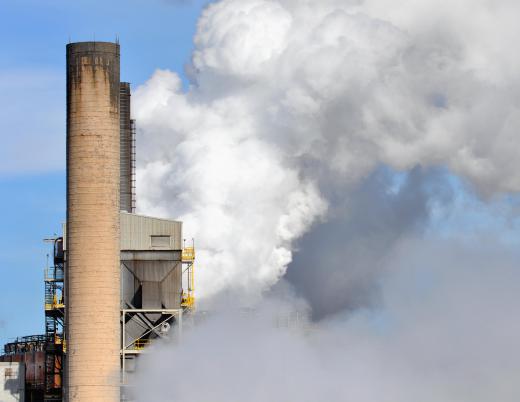Emissions trading is a feature of some plans to reduce carbon dioxide emissions, usually from industrial sources such as factories or power plants. Under such a plan, a government or group of governments determines an acceptable overall level of carbon emissions, referred to as a cap. Companies then pay for the right to emit a certain amount of carbon dioxide by purchasing or receiving emissions permits. Emissions trading would occur when a company produced more carbon than its permit allowed it. In that case, such a company could buy permits, or credits, from another company that emitted less carbon dioxide than it was permitted to.
The flexibility for individual companies to emit more carbon than they are initially allowed is thus one feature of emissions trading. This could give established companies a number of years to meet reduced emissions goals, while buying additional permits in the meantime. It could also give some companies the incentive to make more drastic cuts in emissions in order to profit by selling extra permits. Some businesses may also prefer the flexibility of emissions trading to stricter regulations or taxes on carbon emissions. Some in favor of emissions trading are also attracted to its basis in free market principles.

The predetermined carbon cap and the trading of emission credits has led such a plan to be called cap and trade. Such a scheme is favored by some in favor of reducing carbon emissions because it seems to them the easiest way of reducing the carbon emissions of an entire state or country. Unlike some other regulatory options, emissions trading sets carbon allowances at a certain point that would be known to companies and would allow governments to decrease emissions over time. Yearly reductions in carbon emissions could be achieved by lowering the cap annually.
There are usually three options for determining how companies would receive their initial emissions permits. One would be to give permits away for free at the beginning of any emissions trading program. Another would be to auction off permits, in which emissions revenue would be returned to the government. A third option would also sell permits at the beginning, but would return a dividend to consumers or taxpayers to offset price increases caused by the sale of permits.
Emissions trading has been tried with mixed results in the past. In the 1980s and 1990s, the United States government capped sulfur dioxide emissions and sold permits allowing power plants to emit it. The result was a significant decrease in such emissions, which were causing widespread acid rain in the northeastern U.S. In 2005, the European Union began an emissions trading program by giving away permits for free. Early results from that program led many to call it a failure at first.
